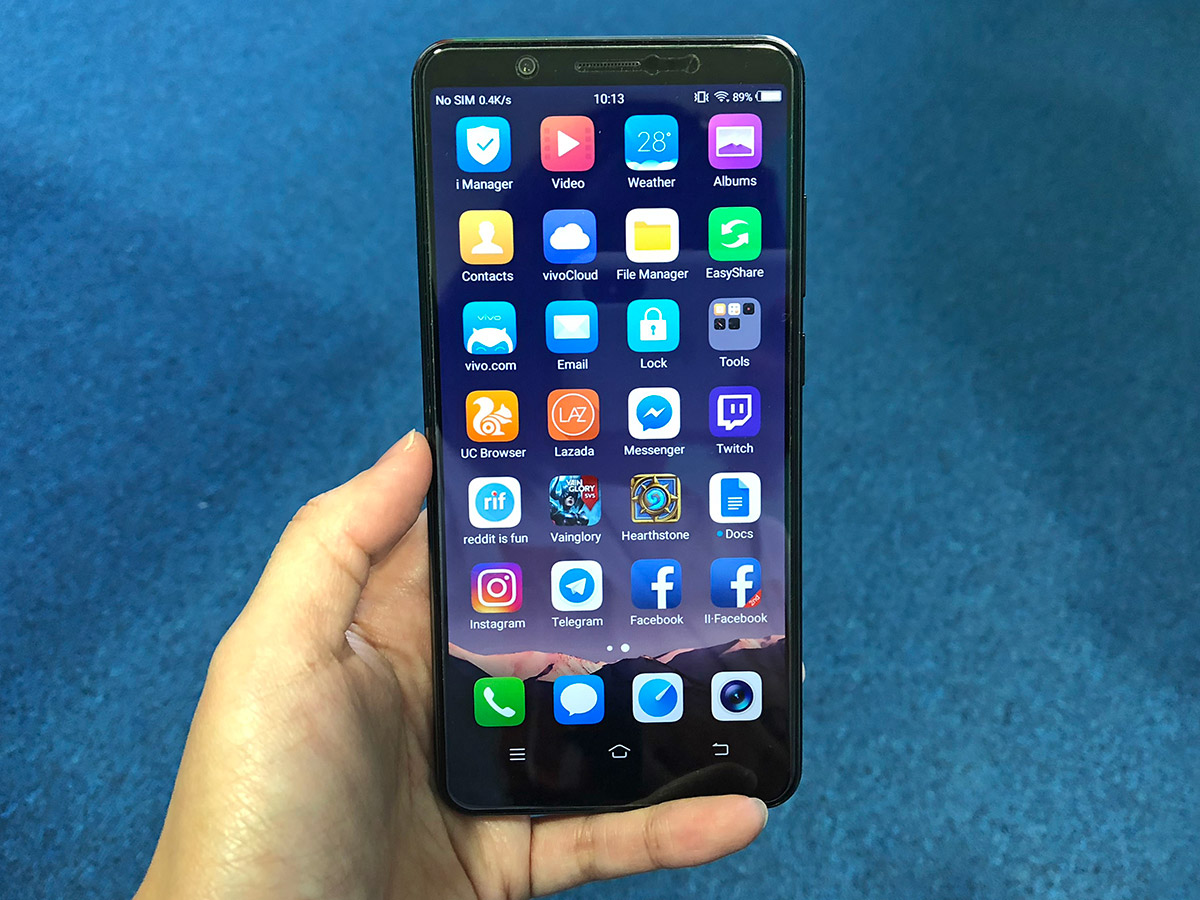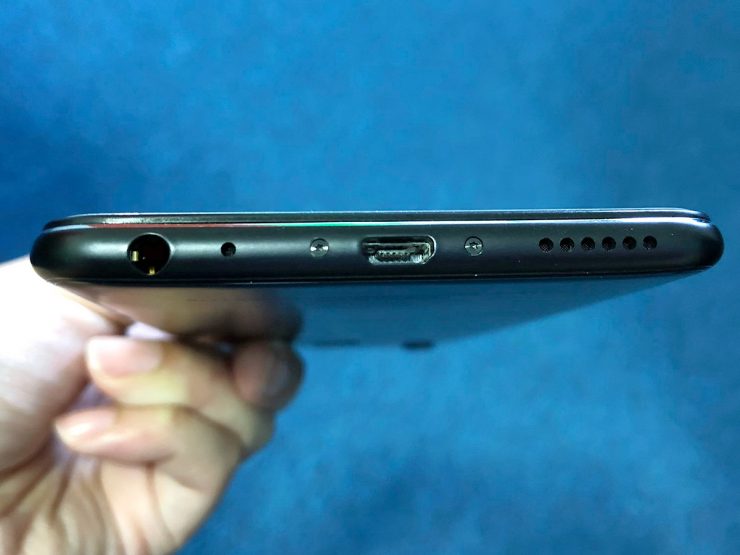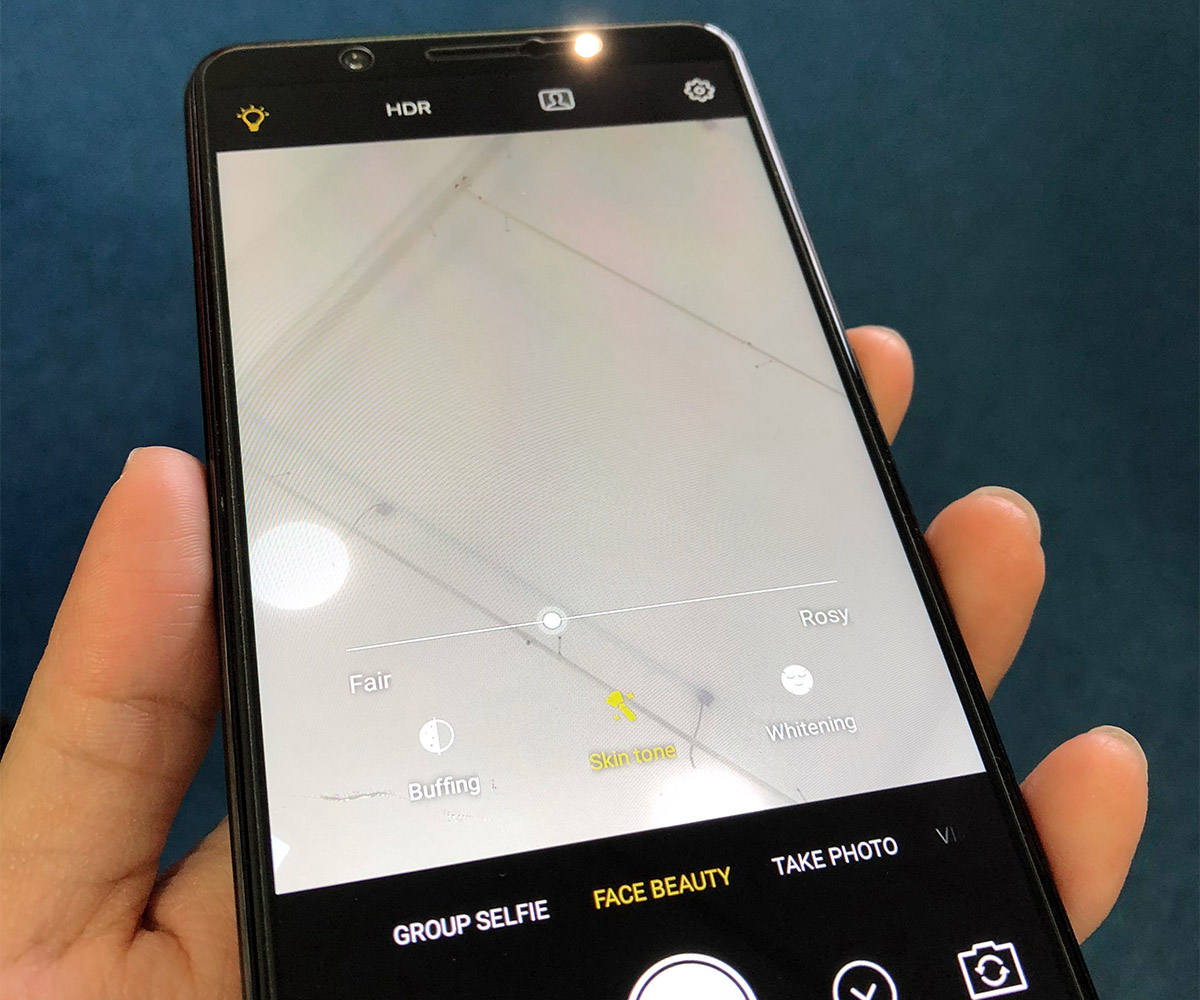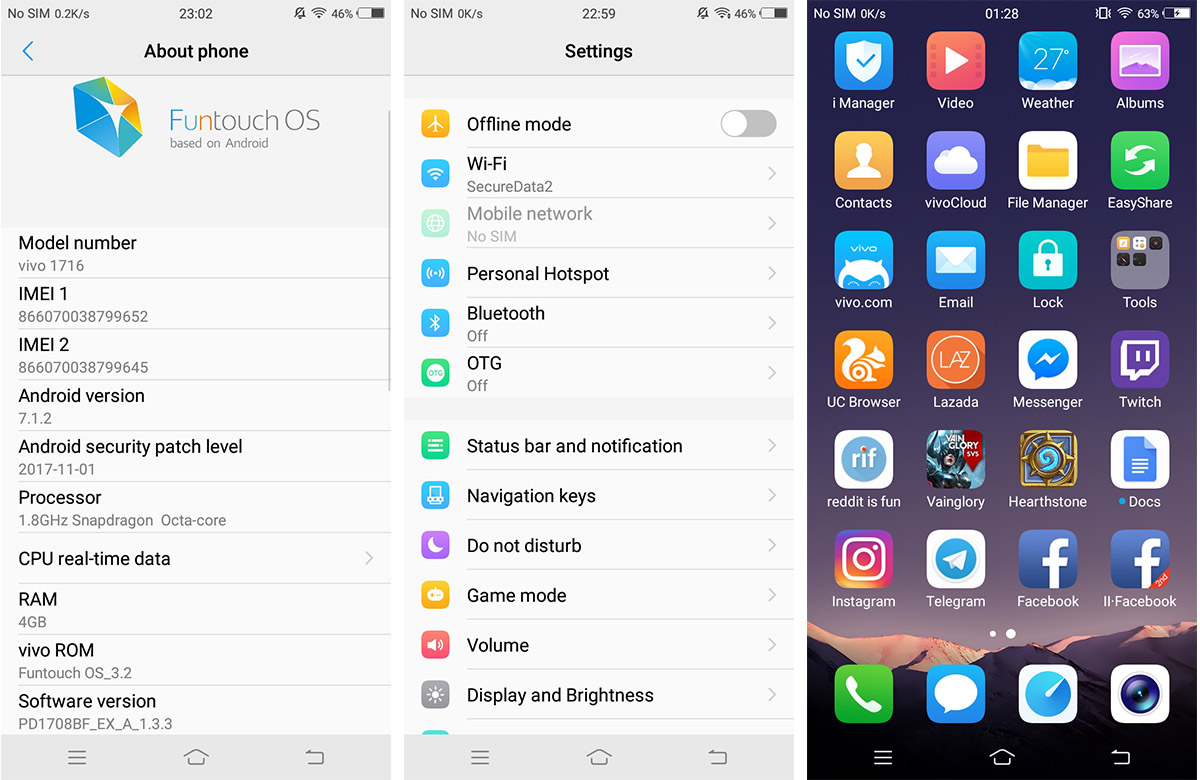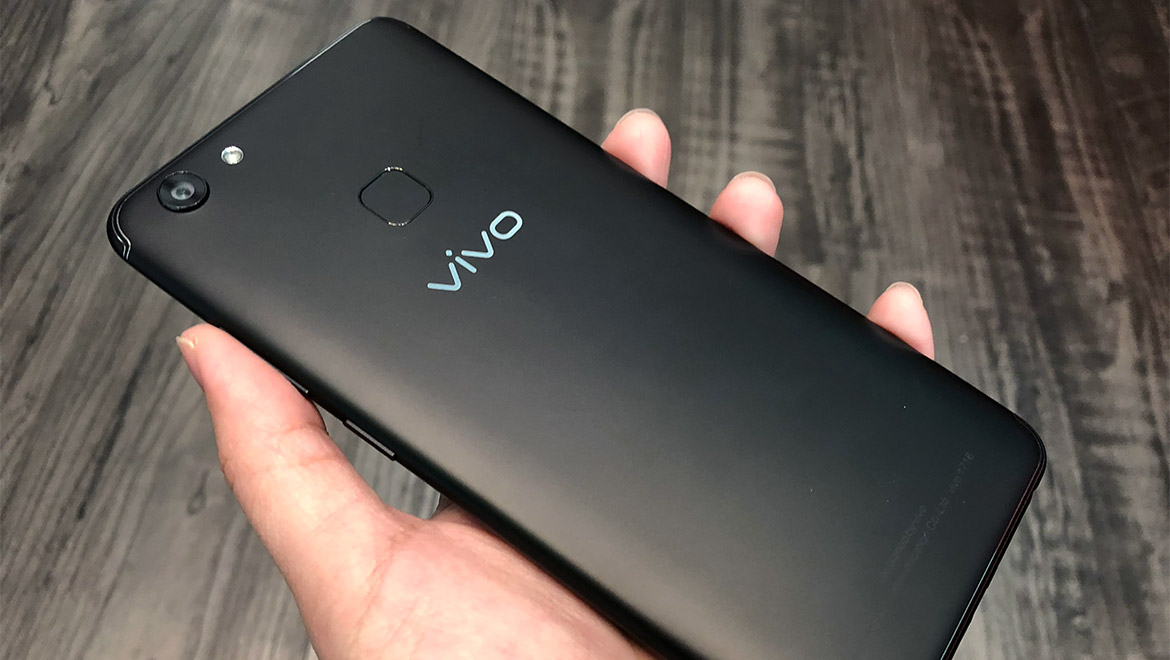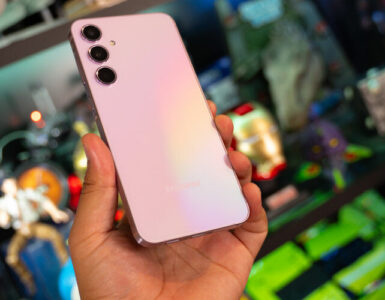In case you didn’t know, Vivo is a subsidiary of BBK Electronics, the same Chinese electronics company behind the OPPO and OnePlus brands of smartphones. They’ve been making quite a splash recently, especially since they’ve snagged the position of being the official smartphone sponsor of the 2018 and 2022 FIFA World Cup. First starting out in China, then expanding to India, Vivo has finally made its way to Singapore.
The company is pretty late to the scene, and instead of launching a flagship device to impress everyone here, they have opted to launch a device that came out last year, to fight against the many mid tier phones have also made an appearance in the local market.
Right out of the box, the phone comes with a screen protector and clear plastic case. The smooth, metal body and single rear camera look and feel reminiscent of the iPhone 7. Minimal 2.1mm bezels around the screen allow for a 5.99-inch display which looks impressive, and images are crisp even though the resolution is just 720 x 1440 pixels.
Fans of the classic headphone jack, rejoice! Vivo has retained the port over switching to supporting only USB-C earphones. Other than that, the phone has its volume and power buttons on the right side, and a well-placed fingerprint sensor on the back.
Hardware-wise, the V7+ is not too shabby, sporting a 1.8GHz octa-core Qualcomm Snapdragon 450, 64GB of storage and 4GB of RAM, with expandable microSD storage of up to 256GB. The Snapdragon 450 is underpowered compared to Qualcomm’s latest Snapdragon 845, and as a result the phone actually froze twice when I tried running numerous applications simultaneously. That’s not a good sign.
It comes with a 3225 mAh battery, good enough for a day’s worth of use, considering the lower resolution screen and lower end processor.
While it doesn’t fare too well on the multitasking front, games could be played smoothly with no hang ups, especially with the Game Mode enabled, which stops all notifications and hides incoming calls and messages.
The merits of the Game Mode feature are debatable, as while it does provide an uninterrupted mobile gaming experience, it can also block potentially important calls. Whichever side you rest on, the option is there for gamers, and the large screen makes gaming quite enjoyable.
All these features are pretty much essentials in most mid-range smartphones, so what is Vivo’s way of setting themselves apart? By beefing up the selfie camera in their V7+.
The real star of the show here is front camera, which Vivo markets as “the ultimate selfie camera”. Sitting at a whopping 24MP, the front camera also sports f/2.0 aperture, HDR, Portrait mode, a front-facing LED light, and comprehensive beautifying functions.

Selfies taken with the V7+ are sharp, with great colours and dynamic range. Portrait mode creates a ‘bokeh’ effect, producing visually appealing selfies with the subject in focus and the background blurred. The bokeh effect looks quite natural, keeping most of my hair and even my headphones in focus with the exception of some flyaway hairs on the left.
The LED light helps brighten up photos taken in slightly lower-light conditions, but is a tad too bright for those taken in dark places as they turn out like photos taken with flash. When used in a lit room, they give your selfie just that extra oomph, making your eyes look bright and giving you an even skin tone.
Vivo’s Face Beauty function allows you toggle 3 facial enhancement features – buffing, skin tone, and whitening. They help you hide all those unwanted blemishes and dark eye circles in a natural manner, provided you don’t turn them up to maximum of course! Face Beauty works even in video calls, so you can maintain that appearance of flawless skin as you video chat with family and friends.
Vivo V7+ on the left, iPhone X on the right.
The rear camera isn’t as flashy as the front, but holds its own at 16MP. When compared to the iPhone X camera, colours appear slightly less vibrant in photos with the V7+. This is visible when contrasting the blue of the mat underneath the cat as well as the box, as the V7+ photo turns out with slightly less saturated colours.
Overall, the rear camera still produces satisfactory photos, with the cat’s fur and whiskers looking crisp and clear. It also has a Pro mode for those who want to customise their camera settings, and a Live Photo function not unlike Apple’s camera.
You might think, since the front camera is so much better than the rear, I should just take more of my pictures with the front camera! Great idea, right? Not quite, because while the front camera is great at recognizing faces, it struggles to focus on anything that isn’t a person’s face. We tried taking a photo of a figurine with the front camera, but it refused to focus on the figure, instead putting the background into focus.

The more we look, the more the Vivo V7+ seems heavily inspired by Apple’s iPhone, and this inspiration extends to its operating system. The phone runs on Android 7.1.2, but is masked with Vivo’s own Android skin named Funtouch OS.
Funtouch it may be called, but fun it completely isn’t. The notifications and shortcuts traditionally located in the drag-down menu that Android users are accustomed to have been split into two separate panels. Swipe up for shortcuts, brightness and volume settings, swipe down for notifications. This ends up being frustrating for regular Android users, as these menus have been relocated in Vivo’s bid to mimic iOS.
The pull-up panel looks similar to the Apple equivalent in iOS 9 and 10, but even Apple themselves are moving away from this design as they transition everything back to the pull-down menu of the iOS 11 in the iPhone X.
The iOS-esque squarish icons are located right on the home screen as the Vivo has done away with an app drawer. This isn’t too big a change, and our biggest gripe with Funtouch is probably the Settings menu interface. Android 7.1 had settings clearly categorised into 4 groups – Wireless and networks, Device, Personal, and System, and a search function for easy navigation.
Funtouch has stripped away everything intuitive about Android’s Settings, and instead just has 34 submenus with no search function. Navigating through the sea of menus to get to a specific setting ends up being time-consuming, as you can’t simply type your query into a search bar.
The phone also doesn’t have NFC functionality, leaving the V7+ behind in the dust as businesses increasingly adopt mobile payments.
A positive aspect of the Funtouch OS is its app cloning feature, as you can see in the double Facebook icons at the bottom right of the above screenshot. This allows you to use two iterations of an app simultaneously, which is useful for messaging and social media apps if you manage more than one phone number or account. Why would one need this feature? Only the heart knows.
At SG$469, the mid-range V7+ won’t burn a hole in your wallet, but isn’t the greatest value considering the lower-end hardware and software. If you can live with that, then the V7+ is truly a dream come true for those who want top quality, self indulgent selfies.
GEEK REVIEW SCORE
Summary
The V7+ lives up to its claims of being the best selfie camera currently out there, but is otherwise a pretty average device that tries a little too hard at being an iPhone.
Overall
6.8/10-
Aesthetics - 7/10
7/10
-
Build Quality - 7.5/10
7.5/10
-
Performance - 6/10
6/10
-
Value - 7.5/10
7.5/10
-
Geek Satisfaction - 6/10
6/10


